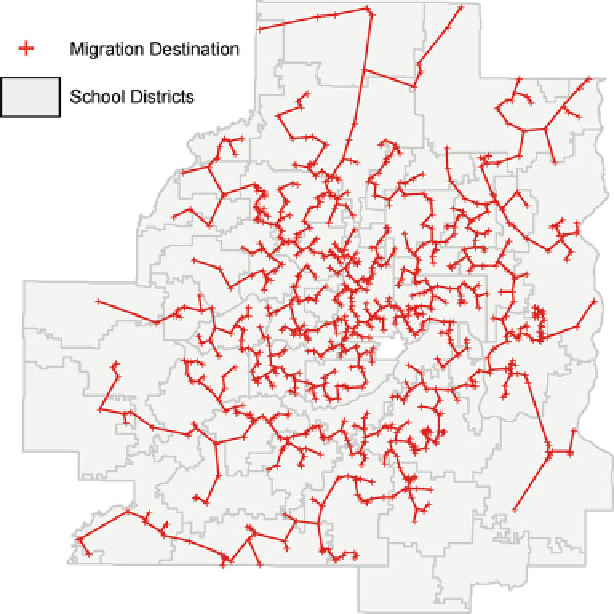Geoscience Reference
In-Depth Information
Fig. 6.6
Minimum spanning tree connecting intraurban migration destinations. Note: MST is
scale independent. School districts serve as background
6.5
Discussion
Agent-based modeling of intraurban migration illustrates the importance of interac-
tion between vacancy distribution and housing search, particularly in how complex
intraurban migration patterns exhibited in the aggregate can arise from simple
behavioral rules. The key finding of this work is that while it is a safe assumption that
people take into account a range of personal, social, and environmental factors when
making momentous housing decisions, distance-and-direction handily captures key
facets of intraurban migration.
The prime import of this work is that it demonstrates a straightforward means
for modeling the housing search process. The pure distance-based decision-making
strategy, when applied to appropriately specified housing vacancies, can generate
spatially realistic aggregate migration patterns. The addition of migration direction
improves the fit somewhat at the cost of introducing greater complexity, given that
it appears to capture the small but significant effect of directional bias even when
using just a single downtown center instead of actual working places as the source

Search WWH ::

Custom Search